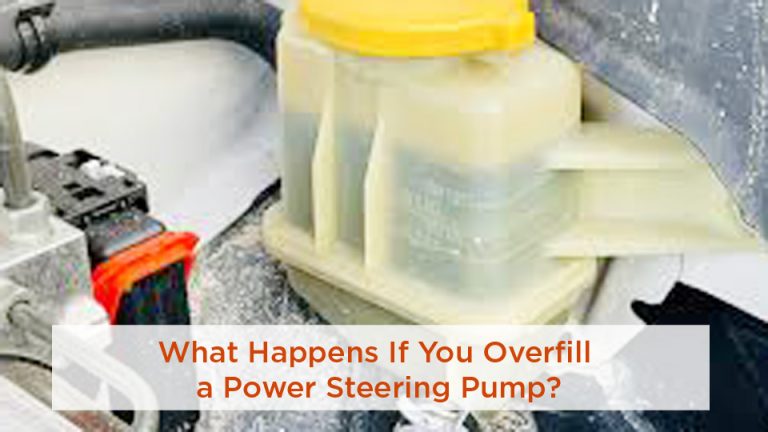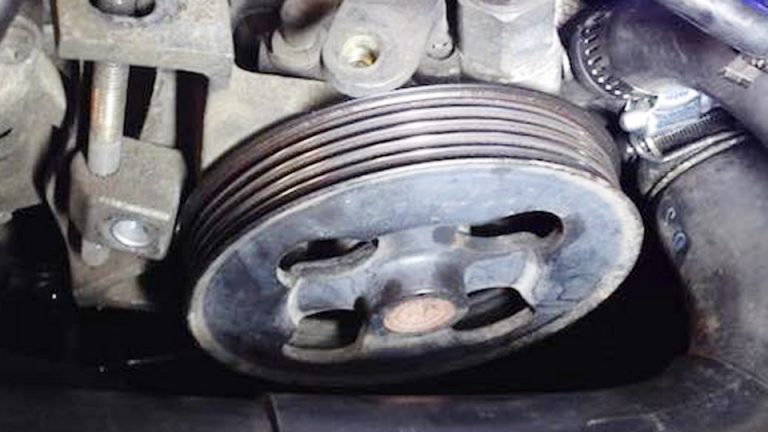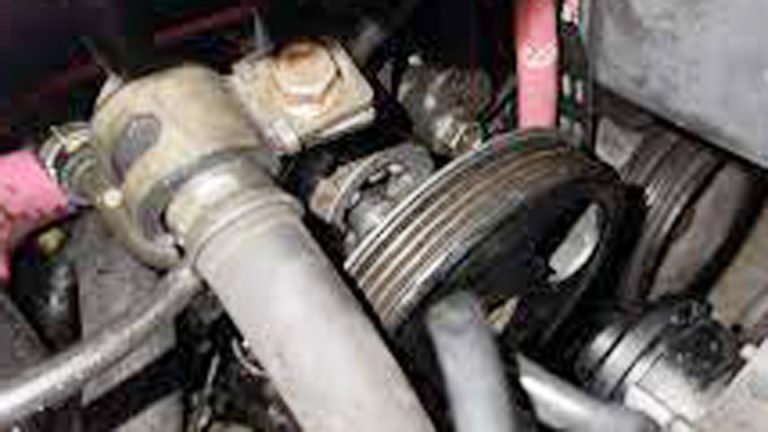A lot of new drivers come into the shop stressed about why they didn’t pass their test, even though their car is in perfect shape—no strange noises, no worn brake pads, nothing mechanically wrong. More often than not, the issue isn’t the vehicle at all, it’s technique. One of the most common questions I get is how to hold steering wheel on driving test because the way you grip the wheel says a lot about your control and confidence. Steering isn’t just about comfort—it’s a safety habit that can make or break your driving performance.
I’ve seen plenty of drivers lose points for crossing their arms, gripping too tight, or driving one-handed. That’s why I always share the same advice I give in my garage: master your steering technique, and you’ll not only pass the test—you’ll drive safer every day after.

Image by carsales
Steering Wheel: What It Is and What It Does
Let’s start with the basics, like I do when explaining this to auto students in my local community college class. The steering wheel is essentially a circular interface that translates your hand movements into vehicle turns. It’s typically made from materials like leather, polyurethane, or even wood in classic rides, wrapped around a metal or composite core. In modern US-market cars like the Toyota Camry or Chevy Silverado, it’s integrated with airbags, audio controls, and sometimes even heated elements for those cold winter drives.
What does it do? Simple: it controls the steering gear, which pivots the front wheels. But it’s more than that—it’s your direct link to the road. A responsive wheel gives feedback on traction, helping you avoid skids or overcorrections. From a safety standpoint, it’s critical; improper design or wear can lead to fatigue or loss of control.
Performance-wise, a lighter aftermarket wheel can sharpen handling in sports cars like the Mustang GT. Cost-wise, neglecting it might mean shelling out $500–$1,000 for a full steering system fix, not to mention fuel efficiency dips if alignment goes off due to play in the wheel.
In my garage days, I once had a customer with a 2015 Jeep Wrangler complaining of vague steering. Turned out the wheel’s mounting had loosened, affecting the entire column. A quick tighten-up saved him from a bigger bill, but it reminded me how this “simple” part impacts everything.
How to Hold the Steering Wheel During Your Driving Test
Alright, let’s tackle that burning question head-on: how to hold the steering wheel on a driving test? I’ve coached dozens of nervous teens and adults through this, and trust me, examiners are picky because it shows your control and awareness.
The gold standard in the US, backed by the National Highway Traffic Safety Administration (NHTSA), is the “9 and 3” position. Imagine the wheel as a clock—left hand at 9 o’clock, right at 3. This keeps your arms clear of the airbag deployment zone, unlike the old “10 and 2” which can put your hands in harm’s way during a crash. Hold it firmly but not white-knuckled; use your fingers for grip, thumbs resting lightly to avoid injury if the wheel jerks.
For turns, use the push-pull method: push up with one hand while pulling down with the other, keeping both on the wheel. No hand-over-hand crossing unless necessary for tight maneuvers, as it can look sloppy to testers. In states like California or New York, one-handed steering is an instant fail—keep both hands on at all times except for signaling.
Common mistakes? Palming the wheel like you’re spinning a pizza—it’s lazy and reduces control. Or gripping too high, which tires your arms. I remember failing my first test back in the day because I let go during a straightaway chat with the examiner. Lesson learned: practice in an empty lot, mirror your grip, and breathe easy. This technique not only helps pass but improves real-world driving, reducing strain and boosting reaction times.
Common Problems with Steering Wheels and Signs of Failure
Over the years, I’ve seen steering wheels go bad in ways that surprise owners. Common issues include wear on the covering, like cracking leather on high-mileage Dodge Rams, or internal failures in the clock spring that handles electrical connections for horns and airbags.
Signs of trouble? Vibration or shuddering when turning—often from worn bushings or unbalanced wheels, but it transmits through the steering wheel. Loose play, where the wheel wobbles without turning the tires, points to rack issues but feels right at your hands. Noises like squealing or grinding? Could be low power steering fluid or a failing pump, making the wheel stiff.
In electric power steering systems, common in newer Teslas or Fords, you might get dashboard warnings or intermittent assist loss. Reliability dips if ignored, leading to costly fixes—I’ve replaced entire columns for $800+ because a $50 fluid top-up was skipped.
One anecdote: A buddy brought his 2018 Subaru Outback with a “sticky” wheel. Turned out UV damage had degraded the polyurethane, causing grip issues. We swapped it out, but early cleaning could’ve prevented it.
When and Why Replacement Is Needed
You don’t replace a steering wheel on a whim—it’s needed when safety or comfort is compromised. If the covering is torn, exposing sharp edges, or if buttons fail, it’s time. Structural damage from accidents? Immediate swap to avoid airbag malfunctions.
Why bother? Safety first—a faulty wheel can fail in a crash. Performance suffers with excess play, and reliability tanks if electricals short out. Cost? OEM replacements run $200–$600, aftermarket $100–$400, plus labor. Fuel efficiency isn’t directly hit, but poor steering leads to overcorrections and wasted energy.
In my experience, high-mileage vehicles like fleet vans need swaps every 150,000 miles. For DIYers, check compatibility— a Chevy wheel won’t fit a Toyota without adapters.
OEM vs Aftermarket Steering Wheels: Pros, Cons, and Options
Choosing between OEM and aftermarket? I’ve installed both, and it boils down to needs.
OEM (Original Equipment Manufacturer) wheels, like those from GM or Ford, match your vehicle’s specs perfectly. Pros: Seamless fit, warranty preservation, high quality. Cons: Pricey, limited customization.
Aftermarket options from brands like NRG or MOMO offer style and performance tweaks. Pros: Cheaper, lighter for better feel, custom looks. Cons: Potential fit issues, variable quality, might void warranties.
Here’s a comparison table based on US market averages:
| Aspect | OEM Steering Wheels | Aftermarket Steering Wheels |
|---|---|---|
| Cost | $300–$800 | $100–$500 |
| Fit & Compatibility | Perfect for specific models (e.g., fits 2020 F-150 exactly) | May need adapters; good for customs like Mustangs |
| Quality & Durability | High, factory-tested | Varies; top brands like Sparco match OEM |
| Customization | Limited to factory options | Endless—carbon fiber, alcantara wraps |
| Warranty Impact | None | Possible void if not certified |
| Popular Brands | GM, Ford, Toyota | NRG, MOMO, Grant, Sparco |
For a daily driver like a Honda Accord, stick with OEM. For track days in a Corvette? Aftermarket for that snappier response. I once swapped an OEM for a Grant on a classic Camaro—transformed the feel, but check local laws on quick-release hubs.
Step-by-Step Guide to Replacing a Steering Wheel
Replacing a steering wheel? I’ve done hundreds—here’s my garage-tested guide. Tools: Socket set, steering wheel puller ($20 at AutoZone), torque wrench, screwdriver. Safety first: Disconnect battery to avoid airbag deployment.
- Park straight, disconnect battery negative terminal—wait 10 minutes for capacitors to discharge.
- Remove airbag: Pry off covers, undo bolts (usually Torx). Gently lift, disconnect wires.
- Loosen center nut (21mm typical), but leave threaded to catch wheel.
- Use puller: Thread onto hub, tighten to pop wheel off.
- Install new: Align splines, torque nut to spec (e.g., 30 ft-lbs for most Fords).
- Reconnect airbag, battery. Test horn, controls.
Common mistakes: Forgetting to straighten wheels first—messes alignment. Or over-torquing, cracking the hub. On a 2012 Ram I fixed, the owner skipped the puller and bent the column—extra $200 fix. Pro tip: Label wires for easy reassembly.
Maintenance Tips for Keeping Your Steering Wheel in Top Shape
Maintenance is key—I’ve seen neglected wheels cause bigger headaches. Clean weekly with a microfiber cloth and mild interior cleaner (like Meguiar’s). For leather, condition monthly with Lexol to prevent cracks.
Avoid direct sun—use a shade screen. Check for looseness during oil changes. Tools? Just basics, but a UV protectant spray helps.
In humid US areas like Florida, mold can form—wipe with diluted vinegar. Anecdote: A customer’s BMW wheel peeled from hand lotion residue. Now I advise clean hands only.
How to Identify Genuine vs Fake Steering Wheel Parts
Fakes flood the market—I’ve spotted them on eBay buys. Genuine parts have crisp logos, like embossed MOMO stitching. Check weight: Replicas are lighter, flimsier.
Packaging: OEM comes sealed with holograms. Compare to old part—fakes mismatch dimensions. For brands like Sparco, verify serial numbers on their site.
One workshop story: A fake NRG wheel failed in a minor bump, airbag didn’t deploy right. Stick to reputable US sellers like Summit Racing.
Popular Steering Wheel Options in the US Market
In the States, top brands include NRG for affordable customs ($150–$300, fits Civics well), MOMO for premium Italian style ($200–$500, great for Corvettes), and Grant for classics ($100–$400, Chevy-compatible).
Availability: AutoZone stocks basics, Amazon for variety. Compatibility: Check vehicle year—e.g., 2015+ Mustangs need CAN-bus friendly wheels.
Pros of NRG: Quick-release for security. Cons: Some feel cheap. I prefer Sparco for durability in off-road Jeeps.
Steering Your Way to Smarter Decisions
Wrapping this up, the steering wheel is more than a grip—it’s your gateway to safe, enjoyable driving. From nailing “how to hold steering wheel on driving test?” with 9-and-3 to spotting wear early, knowledge saves time and money. When buying or installing, prioritize fit and quality; go OEM for reliability, aftermarket for flair. Always torque to spec during installs—I’ve seen loose wheels cause accidents. Drive safe, folks—hit me with questions in the comments.
FAQ
What is the best hand position for holding the steering wheel?
The recommended position is 9 and 3 for safety and control, keeping hands out of airbag paths. It’s comfy for long drives and test-approved.
How often should I clean my steering wheel?
Weekly wipes with a mild cleaner prevent buildup. Condition leather monthly to avoid cracks—simple habit, big payoff.
Can I install an aftermarket steering wheel myself?
Yes, if you’re handy, but disconnect the battery and use a puller. If unsure, shop labor is $100–$200—worth it for safety.
What are signs my steering wheel needs replacement?
Look for cracks, looseness, or failing buttons. If it vibrates or feels sticky, inspect pronto to avoid bigger issues.
OEM or aftermarket: Which is better for daily drivers?
OEM for seamless integration and warranty peace. Aftermarket shines for customization, but choose reputable brands like MOMO.



